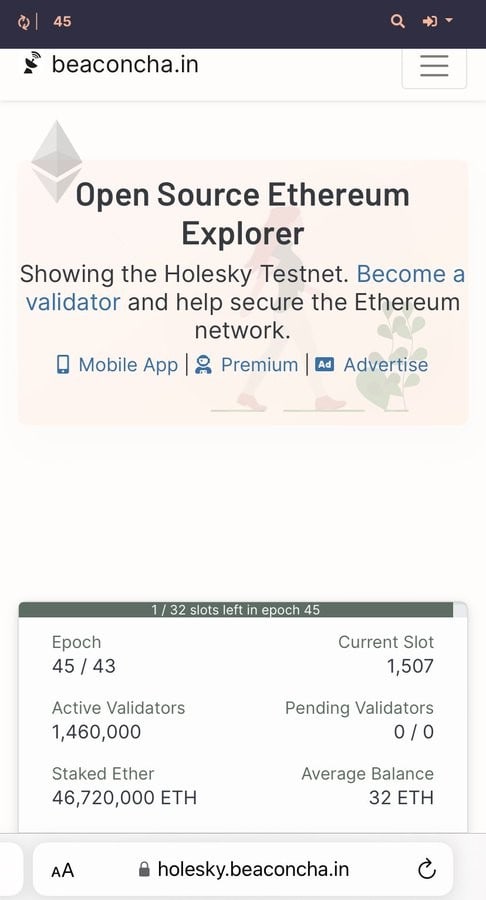In a pivotal move, Ethereum’s Holesky has become the largest Ethereum testnet by validator count, shortly after its tumultuous launch. With a whopping 1.4 million validators, the newest test network is aimed at addressing the scalability challenges faced by the mainnet. Holesky marks a vital step in the evolution of ETH’s testing infrastructure and joins the ranks of existing testnets Goerli and Sepolia, which serve as replicas of the main blockchain, specifically designed for testing new applications and smart contracts.
However, the eagerly anticipated testnet release met a technical snag caused by a configuration error that prevented the network from going live on the one-year anniversary of Ethereum’s transition to proof-of-stake consensus [PoS]. Despite a minor bug reported during the launch, ETH’s core developers remain undeterred. Validator participation has been steadily increasing, with expectations of reaching 90% by 29 Sept.
The primary goal of Holesky is to enhance testing capabilities for Ethereum’s ecosystem by offering a more expansive and realistic environment, which currently boasts around 700,000 validators. By significantly increasing the size of the testnet, ETH developers aim to replicate real-world conditions more accurately.

Decentralized applications tested on Holesky are expected to encounter fewer unexpected challenges when deployed on the Ethereum mainnet. With 1.6 billion ETH in supply and over 10x the size of mainnet’s 120 million supply, Holesky has proactively tackled access issues that plagued its predecessor, Goerli, due to limited testnet ether [gETH] supply, causing prices to temporarily spike above $1.60.
Ethereum’s Roadmap
Looking ahead, Holesky is poised to replace the Goerli testnet, which is set to retire in early 2024. This transition is crucial for Ethereum’s ongoing development, ensuring that the platform’s testing capabilities remain robust and adaptable.
While Goerli is still earmarked for the Dencun upgrade featuring EIP-4844, Ethereum’s journey to the mainnet has encountered some delays. The network has been navigating a series of developer networks, including the imminent launch of Devnet-9, slightly postponed from the initial plan, which is now projected to debut “29 Sept. or early next week.”
The ETH community’s next agenda on the list is to launch the first testnet before the Devconnect conference in Istanbul, set to take place in mid-November. If all progresses smoothly, the mainnet upgrade could become a reality as early as January 2024, marking an epoch-making moment in Ethereum’s evolving landscape.
